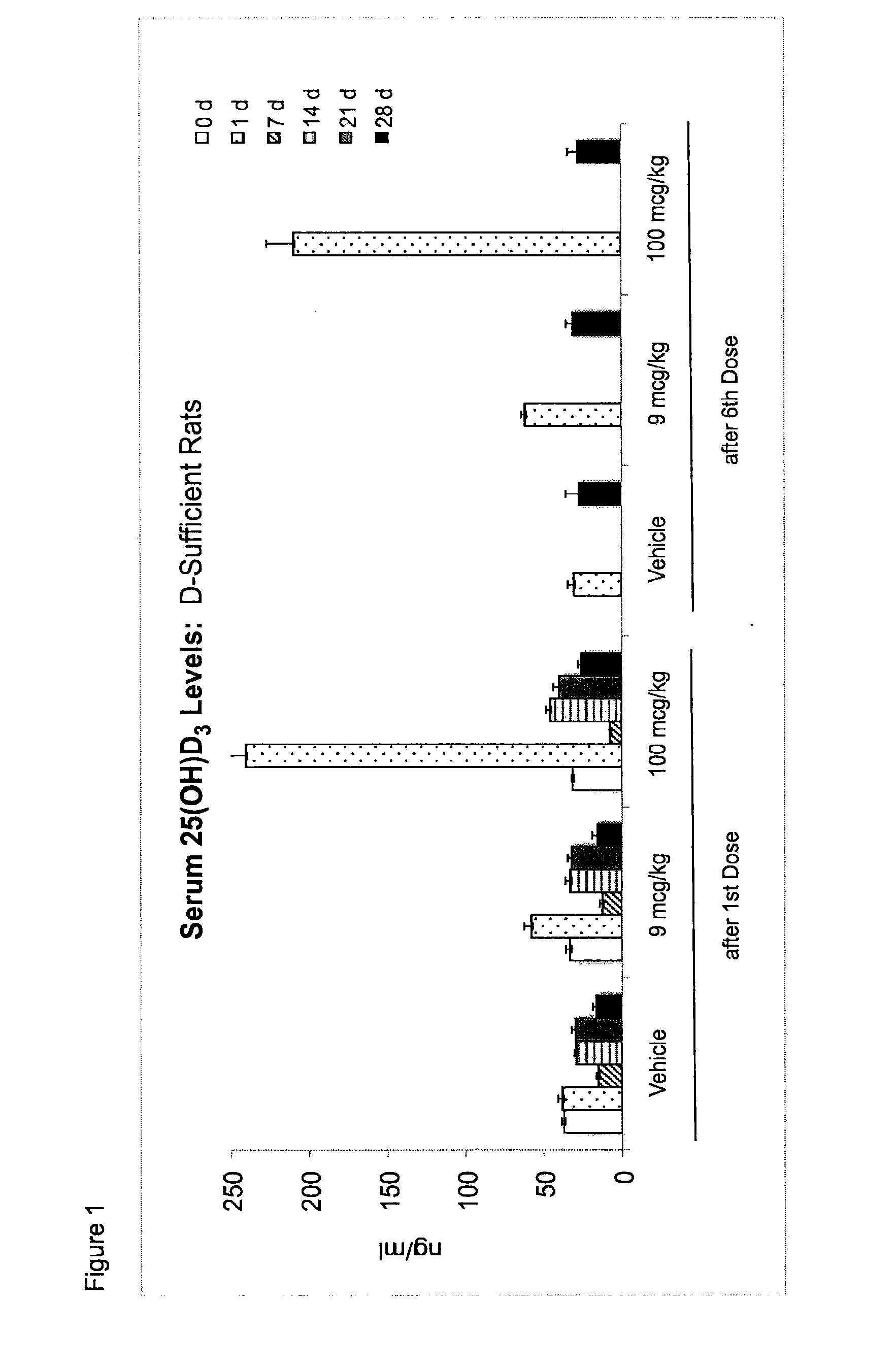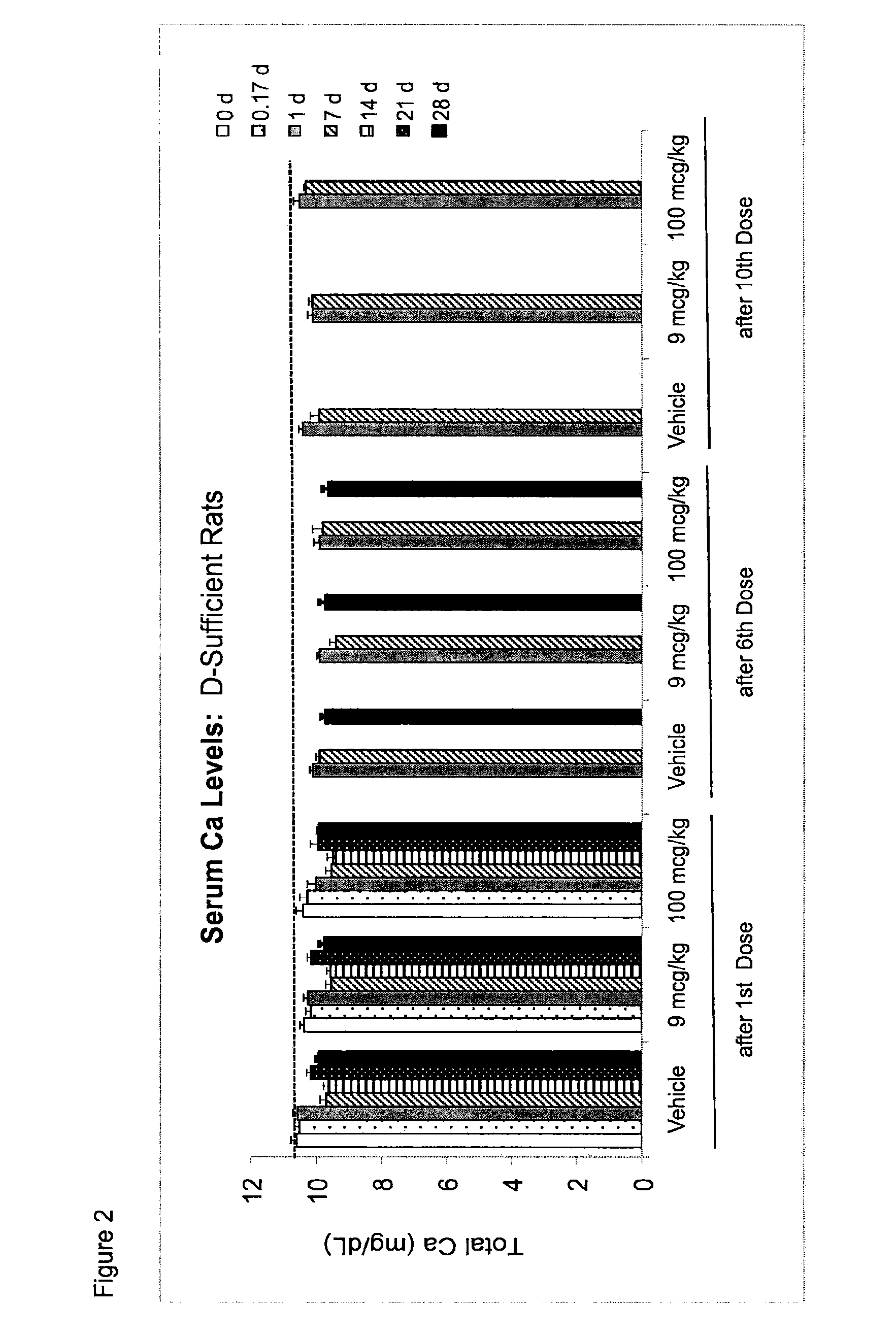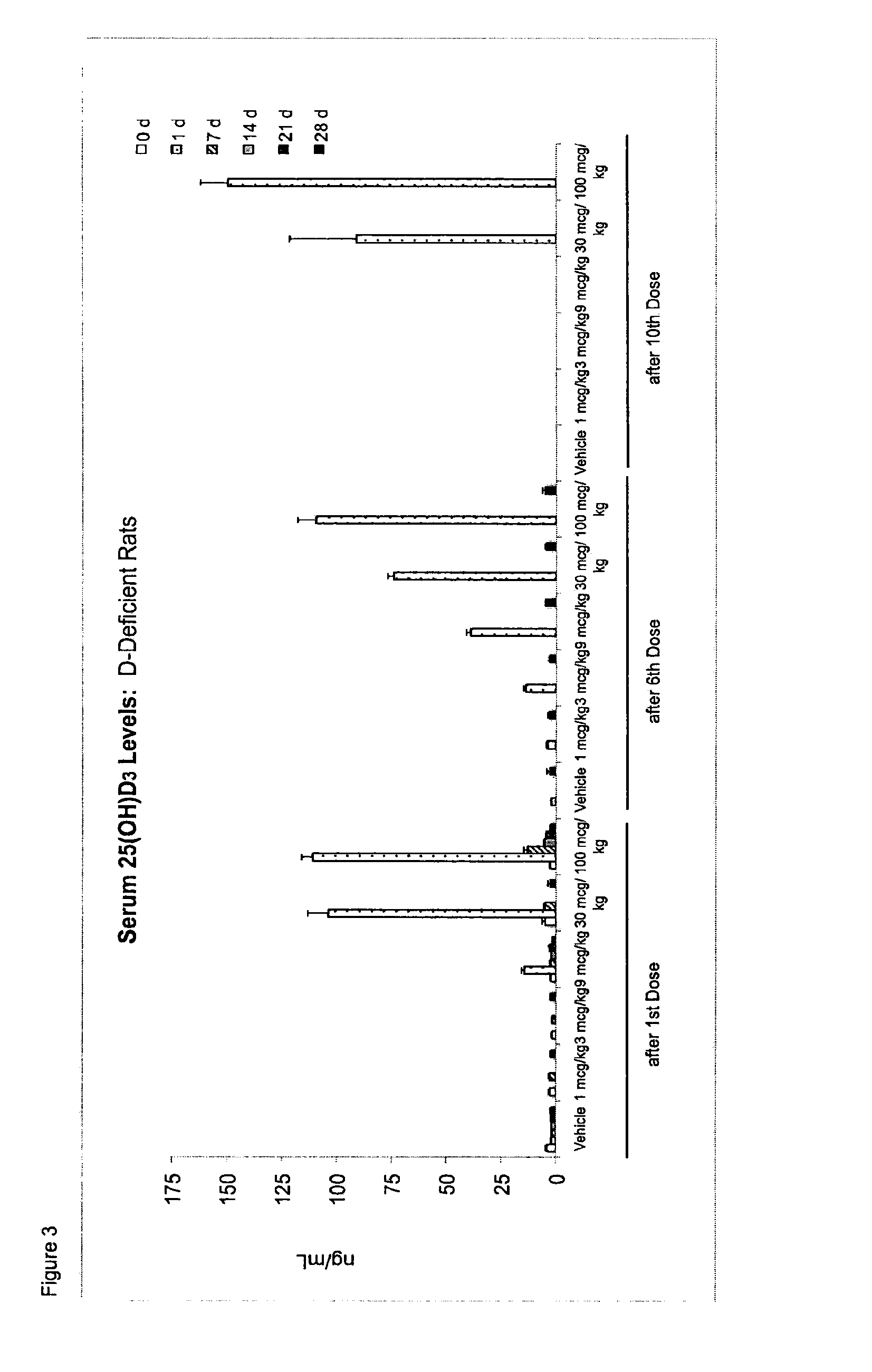Once-a-week administration of 25-hydroxy vitamin d3 to sustain elevated steady-state pharmacokinetic blood concentration
a technology of steady-state pharmacokinetic and once-a-week administration, which is applied in the directions of botany apparatus and processes, medical preparations, metabolism disorders, etc., can solve the problems of vitamin d intoxication, ultraviolet light exposure markedly increases the risk of melanoma, basal cell carcinoma, and squamous cell carcinoma of the skin,
- Summary
- Abstract
- Description
- Claims
- Application Information
AI Technical Summary
Benefits of technology
Problems solved by technology
Method used
Image
Examples
examples
[0079]Applicants examined the effect of once a month and once a week dosing of 25 hydroxy vitamin D3 (25-(OH)D3) in a rat model and have concluded that once a week dosing with 25-(OH)D3 at a level of between 10-100 μg / kg of body weight is an appropriate and effective therapy for maintaining a elevated steady state blood concentration of 25-(OH)D3.
[0080]FIG. 1 is a bar graph showing exemplary elevations of serum 25-(OH)D3 levels occurring after 1× / month oral administration of 25-(OH)D3 at 9 and 100 mcg / kgBW in rats with normal vitamin D status. The rats were male, Sprague-Dawley rats (9 weeks of age, n=15) received from a commercial supplier, and the animals were placed on a purified diet containing 0.47% calcium and allowed to acclimate for one week. After one week the animals were randomly assigned to 3 groups, bled (0 d), and then orally dosed 1× every 28 days with vehicle (5% ethanol in Neobee oil) or 25-(OH)D3 dissolved in ethanol and Neobee oil. Blood was again collected 4 hr, ...
PUM
 Login to View More
Login to View More Abstract
Description
Claims
Application Information
 Login to View More
Login to View More - R&D
- Intellectual Property
- Life Sciences
- Materials
- Tech Scout
- Unparalleled Data Quality
- Higher Quality Content
- 60% Fewer Hallucinations
Browse by: Latest US Patents, China's latest patents, Technical Efficacy Thesaurus, Application Domain, Technology Topic, Popular Technical Reports.
© 2025 PatSnap. All rights reserved.Legal|Privacy policy|Modern Slavery Act Transparency Statement|Sitemap|About US| Contact US: help@patsnap.com



